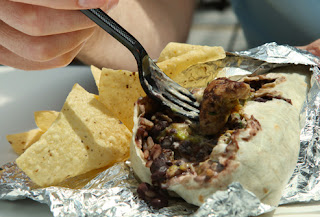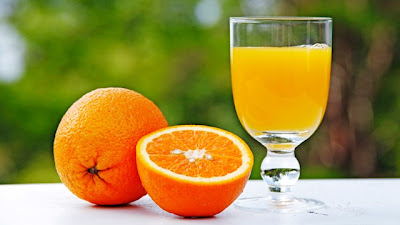
When it comes to keeping your weight down, a new study by Harvard researchers suggests that the quality of your food matters more than its calorie count.
Intuitively, we know that gorging on burgers and French fries and slurping down soda leads to more weight gain than eating fresh fruits, veggies and brown rice. But in the most comprehensive and detailed study of its kind, researchers have figured out exactly how much weight gain is associated with the consumption of certain foods.
The worst offenders were potato chips, which led to more weight gain per serving than any other food, the study found. The best nosh for your waistline? Surprisingly, yogurt.
It matters, of course, how many total calories you take in each day, but the authors say the age-old advice simply to “eat less and exercise more” may be naïve. To control weight over the long term — adults gain about a pound a year on average — the study suggests that people benefit more by focusing on eating right, rather than less.
“For diet, conventional wisdom often recommends ‘everything in moderation,’ with a focus only on total calories consumed,” says Dr. Dariush Mozaffarian, an associate professor of medicine and epidemiology at Harvard Medical School and Brigham and Women’s Hospital, and lead author of the study. “Our results demonstrate that the quality of the diet — the types of food and beverages that one consumes — is strongly linked to weight gain.”
For each extra serving of potato chips eaten in a day, for instance, people gained 1.69 lbs. every four years. Among the other extra-fattening foods the study highlighted: potatoes. Baked, boiled, mashed or French fried, each extra serving of potatoes was associated with an average 1.28-lb. weight gain (looked at separately, French fries were particularly unhealthy, linked with more than 3 lbs. of gain alone). Rounding out the top five most fattening foods were sugar-sweetened beverages, red meat and processed red meat, each associated with about 1 lb. of weight gain every four years.
So why would potatoes be particularly fattening? It’s not clear. Maybe because they’re generally eaten in large quantities, Mozaffarian says, or possibly because, as some previous research has shown, they are the type of food that causes big spikes in blood sugar and insulin, which tends to make people hungrier and overeat at their next meal. Other starches and refined carbohydrates like white bread, white rice, low-fiber breakfast cereal, candy and desserts may affect the body the same way, he says. (On average, the study showed that foods that fell into the “refined grains” and “sweets and desserts” categories were associated with just under a half-pound of weight gain.)
The findings are based on data from three large, long-term government-funded trials looking at diet, lifestyle and health in adults: the Nurses’ Health Study, which has tracked 121,701 women since 1976; the Nurses’ Health Study II, which has followed 116,686 women since 1989; and the Health Professionals Follow-up Study, which includes 51,529 men enrolled in 1986. The new analysis involves 20 years of data on 120,877 men and women from these three cohorts. Researchers tracked changes in participants’ eating and lifestyle habits — and weight — every four years.
Overall, the participants gained 3.35 lbs., or 2.4% of their body weight, in each four-year interval. Over the 20 years of follow up, that amounted to a nearly 17-lb. hike on the scale.
The data also showed that eating specific high-quality foods was linked with less weight gain over time. In fact, the more daily servings people ate of fruits, vegetables, nuts, whole grains and yogurt, the less weight they gained. The yogurt finding — each extra daily serving prevented 0.82 lbs. of weight gain — was unexpected, Mozaffarian says: “This clearly deserves further attention to determine if this is cause-and-effect and, if so, why.”
While diet was most strongly associated with weight gain, lifestyle behaviors mattered too. Exercise was a big one; those who most increased the amount they exercised gained 1.76 fewer pounds than those whose exercise patterns changed the least. Sleep was also a factor: people who slept less than six hours, or more than eight hours, a night were more likely to gain more weight. And alcohol appeared to be an effective fattener, with each additional drink per day associated with 0.41 lb. of weight gain every four years.
Like several other previous studies, the Harvard research found an association between watching TV and ballooning weight. “TV watching has stronger links to weight gain than other sedentary activities,” says Mozaffarian, likely because it encourages snacking both while watching and afterward, due to the influence of food commercials. “Turning off the TV is therefore very important — in particular, to improve diet. If TV must be watched, then it should be done without any eating and without any food or beverage advertising.”
The study found that while individual food choices had only modest effects on weight, diet and lifestyle changes in aggregate accounted for large differences over the long term: people who made the fewest dietary changes gained nearly 4 lbs. more every four years than those who made the most such changes. “Small dietary and other lifestyle changes can together make a big difference — for bad or good,” says Mozaffarian. “That makes it very easy to gradually gain weight unintentionally, but also means that a little bit of attention to a handful of dietary and other lifestyle changes can prevent this.”
The point is that you should be thinking about your diet and lifestyle habits in a comprehensive way. Healthy changes don’t have to be big, but they should be many. It would be wrongheaded to assume that simply cutting out potato chips, and doing nothing else, will magically make you thin — though it’s a good start.
On the potato chip finding, Marion Nestle, professor of nutrition at New York University and author of Food Politics, commented that the weight gain associated with chips and potatoes didn’t track very closely with what we know about how the typical American eats. For instance, how is it that potatoes were associated with more weight gain than desserts like cakes, cookies and pies, which are the leading source of calories in the average diet?
She says it may have less to do with chips per se, and more to do with the fact that people who eat potato chips may eat more calories and more junk overall; conversely, people who eat foods like fruit and yogurt are probably more health-conscious. “I think it’s likely that potato chips and French fries are markers for junk food diets, and yogurt is a marker for healthy diets,” says Nestle.
The study has some limitations, including that it relied on self-reports of portion size and used different serving sizes between foods. It also included a pretty homogeneous population: white, educated adults.
But, in general, Nestle says, the findings echo nutrition experts’ advice for eating well. “The study has a clear and consistent message: if you want to gain weight, eat junk foods and drink sodas. If you want to maintain a healthy weight, eat healthy foods. This means following basic dietary recommendations and choosing relatively unprocessed foods — vegetables, meat, dairy, grains, fruits. And don’t drink too much alcohol.
“It’s not that calories don’t count; indeed they do. But it’s a lot easier to control calories by eating healthfully and avoiding junk foods and sodas than it is to delude yourself into thinking you can count them accurately,” she says.
















































